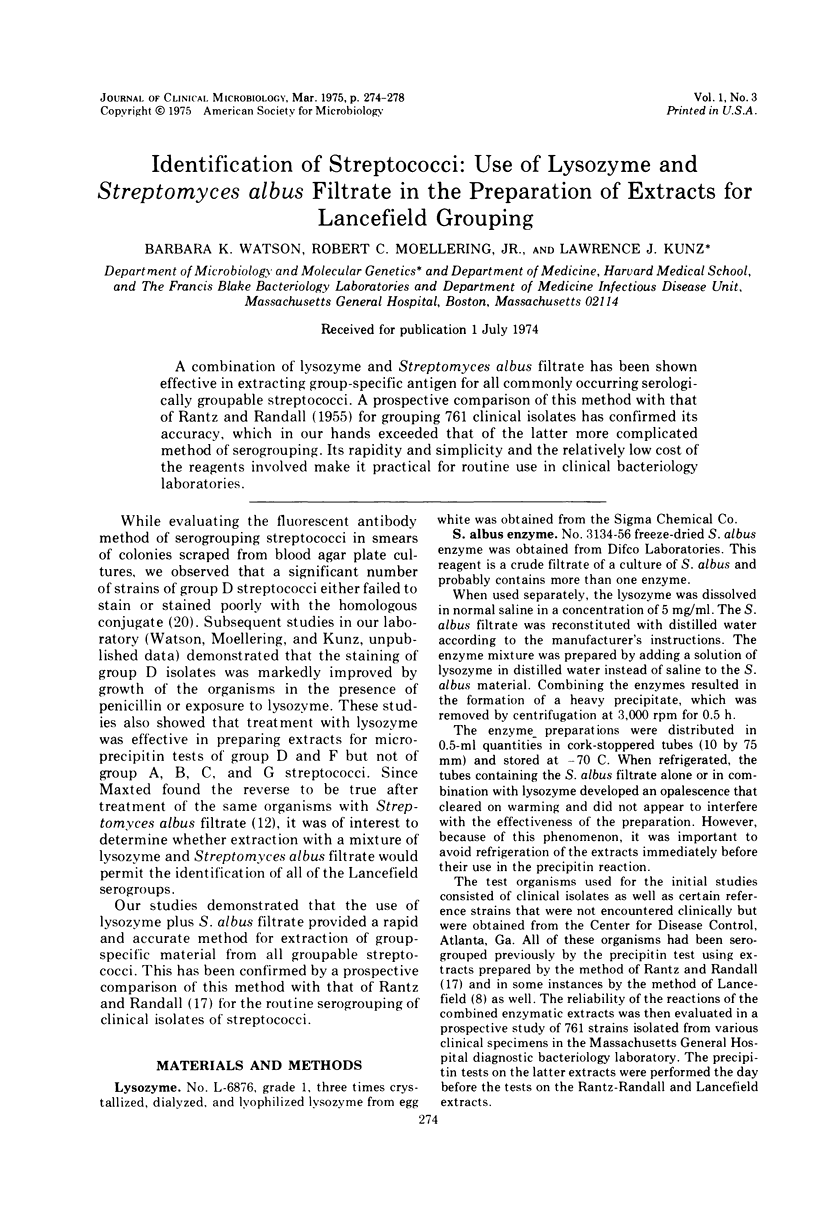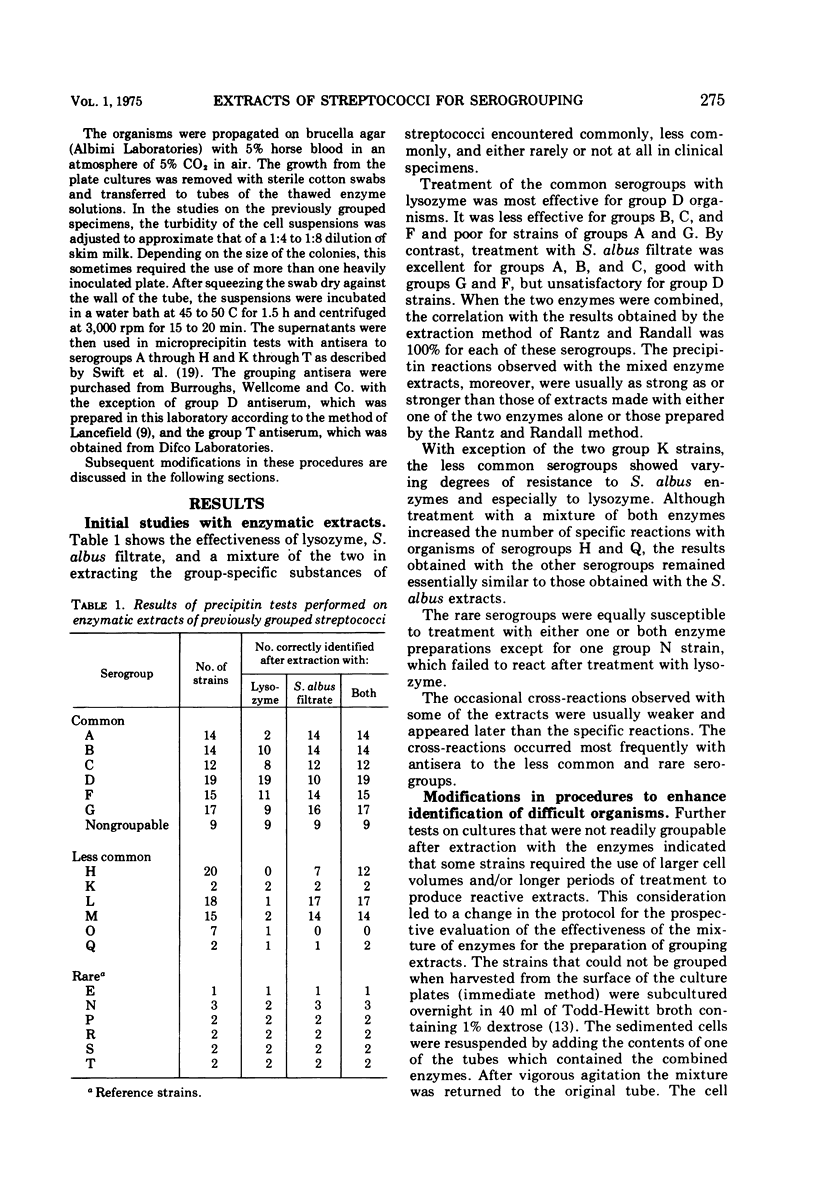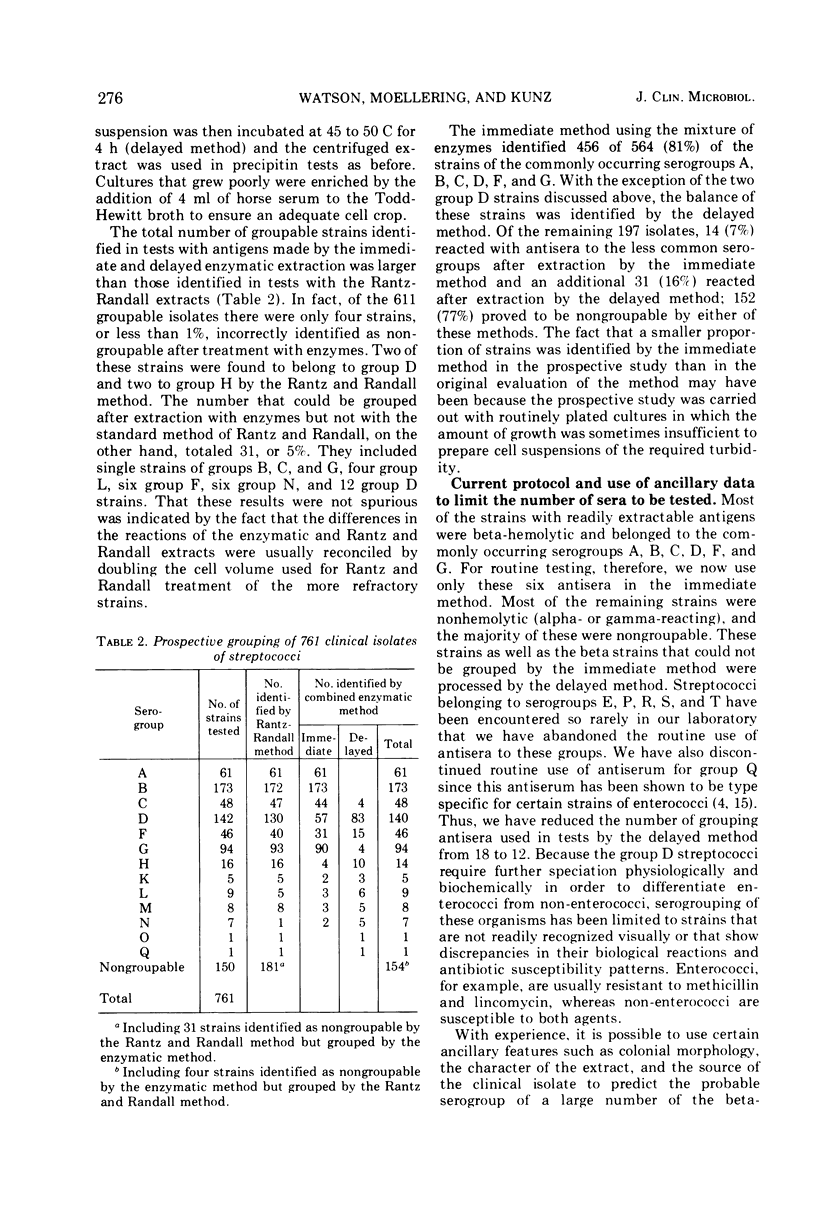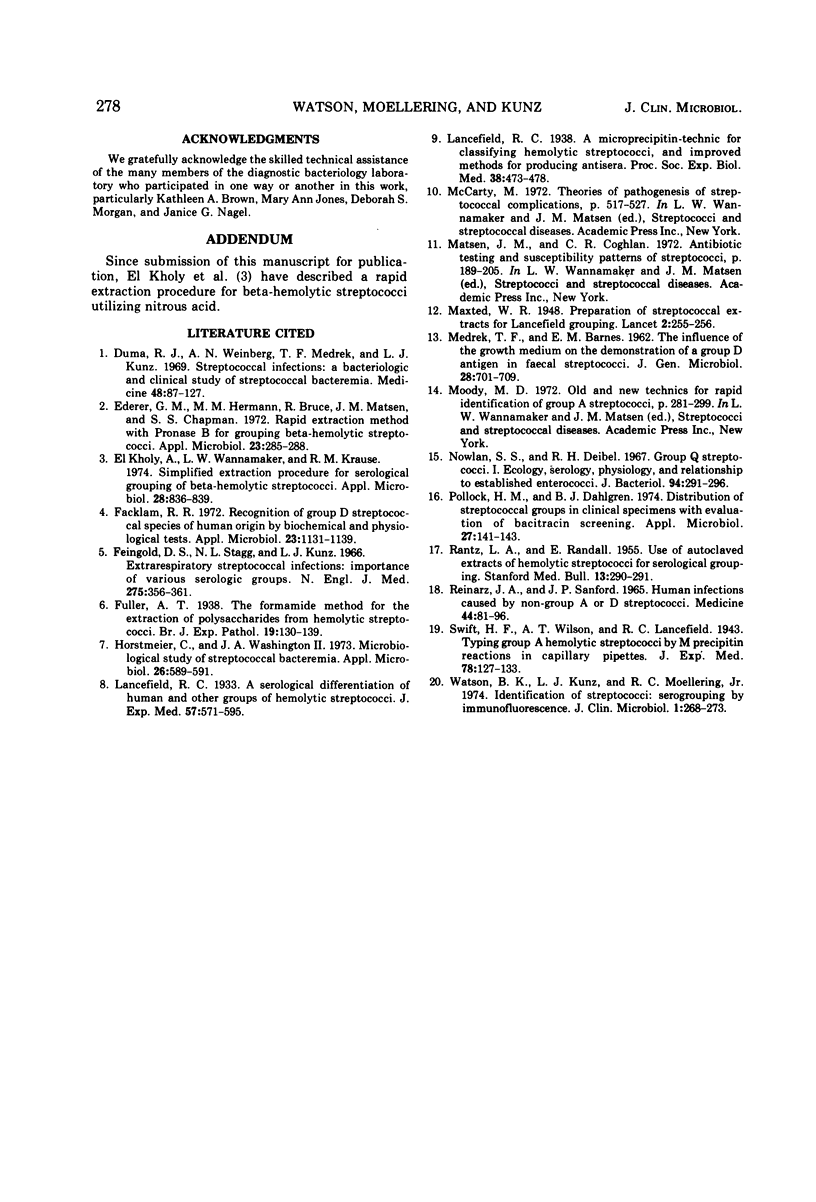Abstract
A combination of lysozyme and Streptomyces albus filtrate has been shown effective in extracting group-specific antigen for all commonly occurring serologically groupable streptococci. A prospective comparison of this method with that of Rantz and Randall (1955) for grouping 761 clinical isolates has confirmed its accuracy, which in our hands exceeded that of the latter more complicated method of serogrouping. Its rapidity and simplicity and the relatively low cost of the reagents involved make it practical for routine use in clinical bacteriology laboratories.
Full text
PDF




Selected References
These references are in PubMed. This may not be the complete list of references from this article.
- Ederer G. M., Herrmann M. M., Bruce R., Matsen J. M., Chapman S. S. Rapid extraction method with pronase B for grouping beta-hemolytic streptococci. Appl Microbiol. 1972 Feb;23(2):285–288. doi: 10.1128/am.23.2.285-288.1972. [DOI] [PMC free article] [PubMed] [Google Scholar]
- Facklam R. R. Recognition of group D streptococcal species of human origin by biochemical and physiological tests. Appl Microbiol. 1972 Jun;23(6):1131–1139. doi: 10.1128/am.23.6.1131-1139.1972. [DOI] [PMC free article] [PubMed] [Google Scholar]
- Feingold D. S., Stagg N. L., Kunz L. J. Extrarespiratory streptococcal infections. Importance of the various serologic groups. N Engl J Med. 1966 Aug 18;275(7):356–361. doi: 10.1056/NEJM196608182750704. [DOI] [PubMed] [Google Scholar]
- Horstmeier C., Washington J. A., 2nd Microbiological study of streptococcal bacteremia. Appl Microbiol. 1973 Oct;26(4):589–591. doi: 10.1128/am.26.4.589-591.1973. [DOI] [PMC free article] [PubMed] [Google Scholar]
- MEDREK T. F., BARNES E. M. The influence of the growth medium on the demonstration of a group D antigen in faecal streptococci. J Gen Microbiol. 1962 Sep;28:701–709. doi: 10.1099/00221287-28-4-701. [DOI] [PubMed] [Google Scholar]
- Nowlan S. S., Deibel R. H. Group Q streptococci. I. Ecology, serology, physiology, and relationship to established enterococci. J Bacteriol. 1967 Aug;94(2):291–296. doi: 10.1128/jb.94.2.291-296.1967. [DOI] [PMC free article] [PubMed] [Google Scholar]
- Pollock H. M., Dahlgren B. J. Distribution of streptococcal groups in clinical specimens with evaluation of bacitracin screening. Appl Microbiol. 1974 Jan;27(1):141–143. doi: 10.1128/am.27.1.141-143.1974. [DOI] [PMC free article] [PubMed] [Google Scholar]
- RANTZ L. A., RANDALL E. Use of autoclaved extracts of hemolytic streptococci for serological grouping. Stanford Med Bull. 1955 May;13(2):290–291. [PubMed] [Google Scholar]
- REINARZ J. A., SANFORD J. P. HUMAN INFECTIONS CAUSED BY NON-GROUP A OR D STREPTOCOCCI. Medicine (Baltimore) 1965 Jan;44:81–96. doi: 10.1097/00005792-196501000-00003. [DOI] [PubMed] [Google Scholar]
- Watson B. K., Kunz L. J., Moellering R. C., Jr Identification of streptococci: serogrouping by immunofluorescence. J Clin Microbiol. 1975 Mar;1(3):268–273. doi: 10.1128/jcm.1.3.268-273.1975. [DOI] [PMC free article] [PubMed] [Google Scholar]
- el Kholy A., Wannamaker L. W., Krause R. M. Simplified extraction procedure for serological grouping of beta-hemolytic streptococci. Appl Microbiol. 1974 Nov;28(5):836–839. doi: 10.1128/am.28.5.836-839.1974. [DOI] [PMC free article] [PubMed] [Google Scholar]


